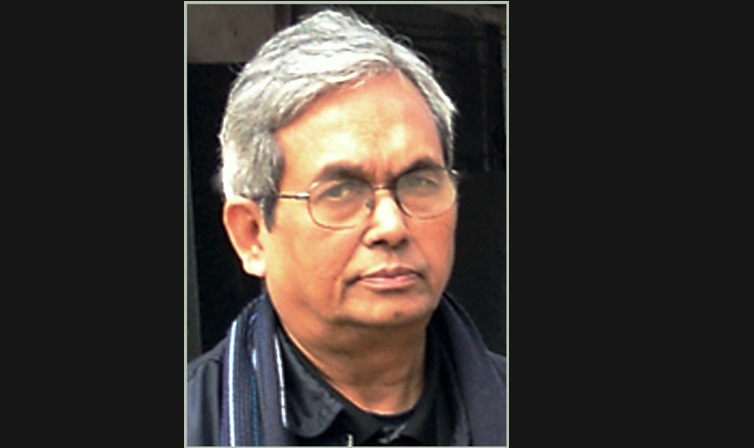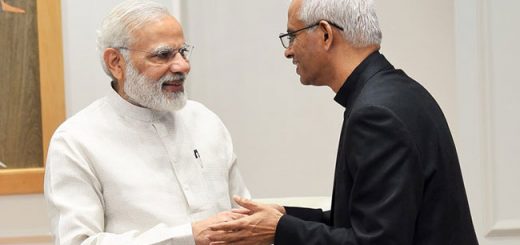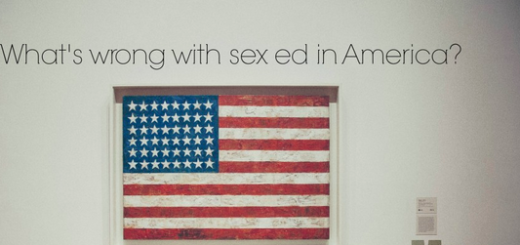Vatican Scandals and the Reform Efforts of Pope Francis

By Jerome D’Costa
(Blogger of ‘Bangladesh Canada and Beyond’)
When one hears the words “Vatican scandals,” his or her eyes pop up in surprise. Is it true? How can this be? The Vatican is in the centre of the Catholic Church from where day after day, week after week, month after month, and year after year, the truths and moralities of Christianity are proclaimed and taught and Catholics are warned of the dangers of pitfalls. How can then scandals infest it?
What is Scandal?
In Christian theology, scandal means such unseemly behaviour of a religious person through which religion is discredited or which causes a moral lapse in another. To say in ordinary language, a serious asymmetry between a person’s words and actions and moral degradation are the scandals. Scandals can be synonymous with sins.
Some Samples of Recent Scandals
Yes, recently, this type of unthinkable bad behaviour has been revealed in the public. Some of these scandals are:
-
Polish Monsignor Krzysztof Charamsa in early October of 2015 announced in a press conference in Rome that, in spite of being a Catholic priest, he is an active homosexual. Introducing a lay gentleman beside him, he announced that that person was his regular sex partner. He called upon Pope Francis to give recognition to homosexuals and their activities in the Catholic Church. Father Charamsa was an official of the Congregation for the Doctrine of the Faith and a professor in two papal theological universities in Rome! The Vatican reacted immediately and relieved him of these positions.
-
Two Italian journalists in mid-November of 2015 outed some scandals of the Vatican by publishing two books. Monsignor Lucio Angel Vallejo of Spain and Ms. Francesca Chaouqui of Italy were members of the newly-formed reform commission of Pope Francis. It has been alleged that these two reform commission members supplied secret documents to these journalists. An investigation against these two members is active now. Some of the information they divulged are:
-
There is a deep divide between conservative Vatican employees (priests, bishops, cardinals, and some lay persons) and reform-supporting members regarding Pope Francis’ efforts in bringing about a new type of pastoral and merciful attitude. Conservatives feel that the Pope’s open and merciful attitude will downgrade the traditional teachings and ideals of the Church. As a result, the Church will lose its primacy in its teaching and morality.
-
There are no fixed rules and audits regarding expenses of different Vatican departments and offices, resulting in misuse of money and uncalled for over-expenses.
-
Vatican officials and employees live in different apartments. When an elderly and sick priest was absent due to his short-time hospitalization, his neighbouring monsignor, without informing him, got his own apartment widened by removing the dividing wall. On his return from hospital, the recuperating priest found his apartment reduced in size and his belongings lying on the floor. He was so shocked at this that he died within a short time.
-
Pope Francis spoke openly and expressed his displeasure about misuse of money. A member of the reform commission, present in the meeting, secretly recorded his speech and gave a copy of it to one of the journalists.
-
The Vatican Bank is the Pope’s bank. Pope Paul VI, Pope John Paul I, and Pope John Paul II died a long ago. It’s strange but true that, at the time of the commission meeting, the bank accounts of these dead popes were still active. There was still 120,000 US dollars in the account of Pope John Paul I!
-
There was, on trial basis, an audit of income and expenses of four departments of the Vatican. It was found that, although in paper there was supposed to be money in these departments, but, in reality, there is no trace of 10,000,000 dollars!
-
Vatican officials and employees live in various apartments at a nominal rent. If they had paid their rent at the existing market rate, the Vatican could earn millions of dollars from these rentals. One example of this mismanagement of rentals is that one lay employee of the Vatican has been living in a 1,000 sq. ft. apartment but paying only 20 dollars a year!
-
The apartment of Cardinal Tarsisio Bertone, the Vatican Secretary of State, was repaired and renovated with money worth 200,000 euros that was diverted from a children’s hospital foundation.
-
Every year, on St. Peter’s Pence Day, money is collected in Catholic churches worldwide and sent to the Vatican for helping the poor in different countries. It’s strange but true that a substantial amount of it was spent on the Vatican administrative purposes.
-
The Vatican has one supermarket, two gas stations, a clothing store, an electronics store, one perfume store, and one cigarette-cigar store, where duty-free items are available for the Vatican officials and employees. In these stores, 6,000 persons with special permits are supposed to buy items, but, in reality, 41,000 of these permits were issued! Many of these people have been buying items here and selling them at higher prices outside the Vatican pocketing a handsome profit!
After becoming pope, Francis gradually learnt of these scandals and on December 23, 2014, he addressed the Vatican officials and employees. In his address, he had mentioned of “15 sicknesses” that afflicted them. Among these sicknesses were: lust for power, spiritual Alzheimer’s, social exhibitionism, sower of discord, double life, sickness of accumulating, hidden and often immoral private life, greed, terrorism of gossip, scandals, nepotism et cetera.
Later he started effective reform measures in the Vatican and its departments. In the meantime, as the internal matters became public through disclosures, he apologized to the faithful about these scandals. He said: “I would like to ask for forgiveness in the name of the Church for the scandals that have happened in this last period both in Rome and at the Vatican.”
Then he said: “The word of Jesus is strong today, woe to the world because of scandals. Jesus is a realist. He says it is inevitable that there will be scandals. But woe to the man who causes scandals,” (Matt 18:7)
In spite of the revelation of these scandals, Pope Francis did not give up. He is determined to reduce unnecessary expenses and bring about other reforms. He is making an extra effort in realizing a new pastoral and merciful attitude in place of old judgmental and royal attitude in the hierarchy.
It’s worth mentioning that in 2012, during Pope Benedict XVI’s time, some scandals were revealed by his butler, who had divulged secret documents to an Italian journalist. Later Pope Benedict resigned from his position and began to live a retired life in a solitary place in the Vatican.
What are the Catholic faithful usually taught?
In the Catholic Church, all, therefore, are baptized in Christ and they believe in Christ. Ordinary Catholics are the majority in number and for their pastoral care and for giving them religious leadership, the priestly class (priests-bishops-archbishops-cardinals-popes) came into being. The pope, therefore, among others has a special title, called servus servorum Dei – servant of the servants of God.
But what’s happening in reality?
With the passing of time, bishops and popes turned into rulers and ordinary Catholics came to be ruled. Roman emperor Constantine (306-337 AD) became a Christian after his conversion and gradually gave the official state recognition to the Catholic Church. Before him, Catholics in Rome were being persecuted under various emperors. Constantine and many of his successors began to give special patronage to the Church and its leaders. The position, power, and the temporal wealth of the bishops and the popes began to increase and consolidate. Later they became so powerful that they began to use their special influence on kings and princes, who in return, began to pay loyalty to them.
To exert influence on kings and princes, one has to be of the same status and power. We, therefore, see that leaving aside the teachings and examples of Jesus Christ on simplicity and poverty, bishops and popes introduced royal manners and costumes among themselves and these were most prevalent until the Second Vatican Council (1962-1965).
We also notice that as kings were addressed as ‘Your Majesty,’ or “Your Highness,’ so also the bishops began to be addressed as ‘Your Excellency,’ archbishops as ‘Your Grace,’ cardinals as ‘Your Eminence,’ and popes as ‘Your Holiness.’
In addition, these Church leaders also began to wear gorgeous and ostentatious costumes, large golden chains and finger rings encrusted with expensive jewels and stones. As part of royal courtesy, Catholics were to bow or genuflect to kiss their rings. In the Indian sub-continental countries, when a bishop or cardinal visits a Catholic parish or institution, many Catholics welcome him by beating drums and cymbals and playing on flutes, as was done in the British period to the government S.D.Os. (Sub-Divisional Officers) and DCs (District Commissioners). Bowing and kissing the rings of the bishops, cardinals and popes are very much part of those royal etiquettes that are still on today.
Instead of being servants, the priestly class became a ruling class. If Catholics go against or break any Church teaching or tradition, this class takes on the responsibility of judging, condemning, and punishing them. They also look for any infractions or sins everywhere and send the Catholics to confessions or scold them, and keep them away from receiving the Holy Communion. When members of the priestly class break Church teachings or commit sins, including mortal sins, they are scarcely judged or punished. Everything is kept secret. They are shifted from one place to another with the wrong thinking that they would not repeat the same sins elsewhere.
If one reads the teachings of the Catholic Church, he or she finds that priests (including bishops, cardinals, and popes who are basically priests) are called alter Christus – another Christ. They, being mere humans like us, but because of their anointment, can turn the Holy Communion and holy wine in the Mass into the body and blood of Christ. This is an act that even the heavenly angels are not able to do. Theologians with their lofty thinking like this and bombastic theological terms, raised the priesthood to heaven-high, much above the level of earth giving the impression as if they are above everything – even above sins. In real life situation, are the priests so holy and capable of remaining so high in that position? If they could there would not be so many scandals in the Church and the Vatican in the past and in the present.
Pope Francis wants a change in this direction. He has been reminding priests-bishops-cardinals that they need to come down to earth from their judgmental and condemning attitude and they need to be forgiving and merciful. He wants them to walk with their Catholic faithful, participate in their daily joys and sorrows, and partake in their different challenges and obstacles. He wants them to provide pastoral care as Christ did in his life on earth.
Scandals Are Present from the Very Beginning of the Creation
We see in the Bible that the first scandal or sin by non-humans was against God committed by the rebel angels in heaven. These rebellious angels were ousted from heaven and placed in the hell and they are being called ‘satan’ or devil.
Where there are human beings, there are scandals, too. At the instigation of the satan, Adam and Eve – the first human beings created by God – committed the Original Sin, by eating the fruit from the prohibited tree in the Garden of Eden. Then we see the scandal of Cain, the eldest son of Adam and Eve. Out of envy, he killed his younger brother Abel. The Old Testament of the Bible is full of examples of numerous types of scandals and sins.
In the New Testament, we find King Herod murdering innocent newborn babies out of his obsessive fear of the rise of a rival king. Then we see the murder of John the Baptist.
Christ’s disciples, who were with him all the time and witnessed his teachings and pastoral care during his preaching life, did not hesitate to create scandals. Judas Iscariot betrayed Jesus by handing him over to the Jewish chief priests and the elders in the Garden of Gethsemani, on the lower slopes of the Mount of Olives. He later committed suicide by hanging from a tree. At the capture of Jesus, his disciples forsook him and fled the garden. Later we see Peter, the chief disciple, freely denying Jesus when confronted by a servant during Jesus’ trial.
From the beginning of the Catholic Church, priests, bishops and popes could marry. Gradually, it was observed that, in spite of being married, many became engaged in adultery and other sins against marriage. Seeing this situation, the Council of Elvira (295-302 AD) in Spain, started to impose celibacy in that country. This new tradition did not get introduced in other Catholic European countries for quite a few centuries. Facing bitter experiences (adultery, incest, and claim of inheritance and usurpation of Church and parish land and other properties by children of the clergy), the Church, finally in 1123 AD, imposed mandatory celibacy on the priestly class of the Latin-rite Churches through the Lateran Council. This tradition is continuing till today.
Other latter-day scandals in the Catholic Church were: 11th –century schism of the Greek Orthodox Church, Protestant Reformation movement protesting the gross misuse of the indulgences and their secession from the Catholic Church in the 16th century, the Spanish Inquisition that persecuted many Jews and Jewish converts to Catholicism in the late 15th century, the bungling and murderous Crusades against the Muslims that lasted two hundred years starting from 1096 AD. We also see in the Middle Ages, how the Church fiercely attacked and persecuted apostates, heretics, and opposing groups of the Catholic teachings. Among these were Albigens (also called Cathars), Waldensians, Moravians, Mennonites, and more.
From the beginning of the 16th century, Europeans became engaged in discovery of new lands and continents. Initially the Portuguese and Spanish discovered countries in Africa, and later in Asia and the Americas. As disputes over sovereignty of these countries started, Pope Alexander VI in 1494 divided the newly discovered lands among Portugal and Spain through the Treaty of Tordesilla. These two countries at the time were considered Catholic countries and loyal to the Pope. One may rightly question who was the pope, not ruling or owning any of the newly-discovered countries, to divide the world among these two colonial powers? Portugal and Spain, after ‘discovering’ various countries, forcibly occupied them. Weren’t these illegal land-grabs in the name of bringing the pagans to the light of Christ? Did Christ tell his disciples and followers to use force and persecution for the purpose of preaching the Good News? In face of this flagrant power and force, the Catholic teachings were shamefully overlooked both by the Catholic rulers and Church officials.
Following Portugal and Spain, other European countries began to claim their sovereignty in different lands and expanded their looting of those countries’ valuable resources and taking them to their mother lands.
Portugal and Spain looted so much gold, silver, and valuable jewels and stones that it’s hard to fathom it. From these loots, they donated some to their local bishops and some more to the then popes. Much of these were used in the ornamentation of different cathedrals and basilicas. Theft, looting, and persecution are sins in the Catholic teaching, but where did this teaching go at that time?
In addition, Catholic missionaries would accompany these explorers, adventurers, and merchants to these colonies to evangelize and to bring the native population to the fold of Christ. Many of these missionaries, preaching the sweet words of the Gospel and setting up schools and dispensaries, brought about a great change in the population and turned them into meek and loyal sheep, who easily accepted the colonialists and their sovereignty. Moreover, becoming Catholics, the local people renounced their former names and accepted ‘Christian’ names after their baptism and gradually lost their own culture and languages.
In the 1960s, first in the USA, and later, gradually in many other countries, the sexual revolution spread like wildfire. This revolution was called so because the participants defied socio-religious-government authority and set to use their bodies as they liked without any restrictions and taboos, to engage in different kinds of sex acts, and to defy any barrier on them. In addition, the feminist movement also spread from the USA to other parts of the world. Feminists claimed equality with men and demanded freedom to use their bodies as they liked without any male interference. They also, in an increasing number, began to go out of their homes, seek employment, and remain unmarried until an advanced age.
In the 1950s, the explicitly nude girlie-magazine Playboy began to be published from Chicago, USA. Before this, photos of explicit nakedness and sex acts would be sold and purchased secretly to avoid convictions from the law enforcement authorities. This being the period after the Second World War, people were more free-spirited. The success of this magazine gradually gave rise to numerous other similar magazines, films, and later video films. These public ‘vulgarities’ and ‘obscenities’ influenced many people profoundly. A section of the clergy was not beyond this influence. In an increasing number of them began to engage in sex acts with adult males and females, and some even with under-age children.
From the beginning of the Catholic Church, there were sexual scandals and sins among some of the priests and bishops. This continued until the present time. But modern communications media facilitated an increasing number of priests and bishops in sexual indiscretions. Some may vehemently deny this, but, in reality, this situation in different countries has been proven many times over. Bishop Raymond J. Lahey, of the Catholic Diocese of Antigonish in Nova Scotia province of Canada, was arrested by police in 2009 on charges of child pornography. He used to collect child pornography (nudity and sexual acts between adults and underage children) from his days as a priest. He had thousands of such photos and a collection of videos. These are some of the scandals of the modern times.
Responsibilities of the Laity
- If we critically see, we find in the Bible that God first created Adam and Eve – the first man and woman, who were the “laity” – ordinary human beings. God did not create priests first. For the sake of serving these people religiously and spiritually, the priestly class evolved gradually. The same situation is in the Catholic Church. Catholic priests, bishops, cardinals, and popes came about for serving the laity. So, the importance of the lay men and lay women cannot be denied. In the past, most of the laity was illiterate or less educated. But in the last 100 years, their literacy and education rate increased manifold. The laity has the right to know, understand, and participate in what happens in the Church. As the Bible tells about both the good and bad aspects of man, so the laity also should know of the good and bad that happen in the Church. If the priests, bishops, cardinals, and popes do the good, the laity needs to praise, encourage, and support them, if they do any wrong, the laity should be able to express their opinion in a firm but gentle and charitable manner. This is the way the local and universal Church will progress further.
- In the teachings and practice of the Catholic Church, the priestly class has been raised heaven-high. But, in reality, they are made of the same flesh and blood as those of the laity. They, like the laity, have the same tendency for temptation, weakness, and sin. Since they mingle with many individuals, they are more likely to fall into temptations. We need to regularly pray for them so that they may persist in their commitment to service and holiness. Pope Francis, from the first day of being elected the pope, has been requesting prayers from the faithful for his own weakness and sinfulness. He seems to be the first pope to publicly declare his own weakness.
- As Catholics, we need to know more about our religion. For this purpose, we should read the Bible and Catechism of the Catholic in its entirety. Without knowing our religion, how can we participate in the service of the Church?
- We should regularly read the Catholic Church news and articles from Catholic newspapers, magazines, and the Internet. This way we also can come to know about the ongoing teaching of the Church as well as how Catholics in other countries have been living their lives, solving problems, and making contributions in the Church.
- Pope Francis is giving his teachings in small segments. These are completely Christ-centred and suitable for real life situations. We may get his teachings from various Catholic media.
- From books and the Internet, we may read the ordinary as well as the critical history of the Catholic Church, strengths and weaknesses of the Catholic Church, and history of the Popes.
- For most Catholics, Sunday Masses are the only opportunity for participating in the weekly liturgy and learning about the teachings of Jesus Christ and the Church. Offering the Sunday Mass is also one of the important duties of the priest. In the hour-long Mass, the homily takes 15 to 20 minutes of time. It’s sad but true that some priests deliver their homilies without any preparation. They either repeat items again and again or fail to deliver an effective homily. So, what’s its result? If there were 100 lay men and women in the church and if the failed homily is of 15 minutes, it results in wastage of 25 hours (100×15=1,500 minutes) of time. How can this loss be repaired? This is also a kind of scandal. If a priest gives an effective homily, praise him; if an ineffective one, let him know of that in a gentle but firm manner. Homilies are for the laity, and the laity, therefore, has the right to express their opinions on them.
- If possible, give time and effort in the local church activities. Participate in the activities of the local church institutions and organizations and strengthen the efforts of the priests and bishops.
Conclusion
Scandal or sin – whatever one calls it – was present in the past, is also there in the present, and will occur in the future. We need to jointly make efforts and cooperate to reduce their number and intensity. In addition, we need to be vigilant so that the adverse effects of a scandal or sin may not influence us individually or wholly.
The laity is an important and integral part of the Church, although the priestly class does not recognize or admit it many a time. If the laity were not there, where would the existence of the priestly class be? As Christ has said, “The Sabbath was made for man, not man for the Sabbath,” (Mark 2:27). So, it can also be said that the priestly class was created for the laity, the laity was not created for the priestly class.
We all need to know and let others know the truth. Jesus again said: “If you hold to my teaching, you are really my disciples. Then you will know the truth, and the truth will set you free,” (John 8: 31-32).
Jerome D'Costa – Toronto, Canada
A blogger, author, translator and former Information Officer of Caritas Bangladesh, editor of the 'Pratibeshi' (the national Catholic weekly in Bangladesh) and Associate Director of World Vision of Bangaldesh, Dhaka.
The above article is the English version of the original Bengali-language article, published in the Ahoban magazine, 2015, of the Bangladesh Catholic Association of Ontario, Toronto, Canada, and is available online at: https://issuu.com/jeromedcosta/docs/vatican_scandals_and_the_needed_ref
















